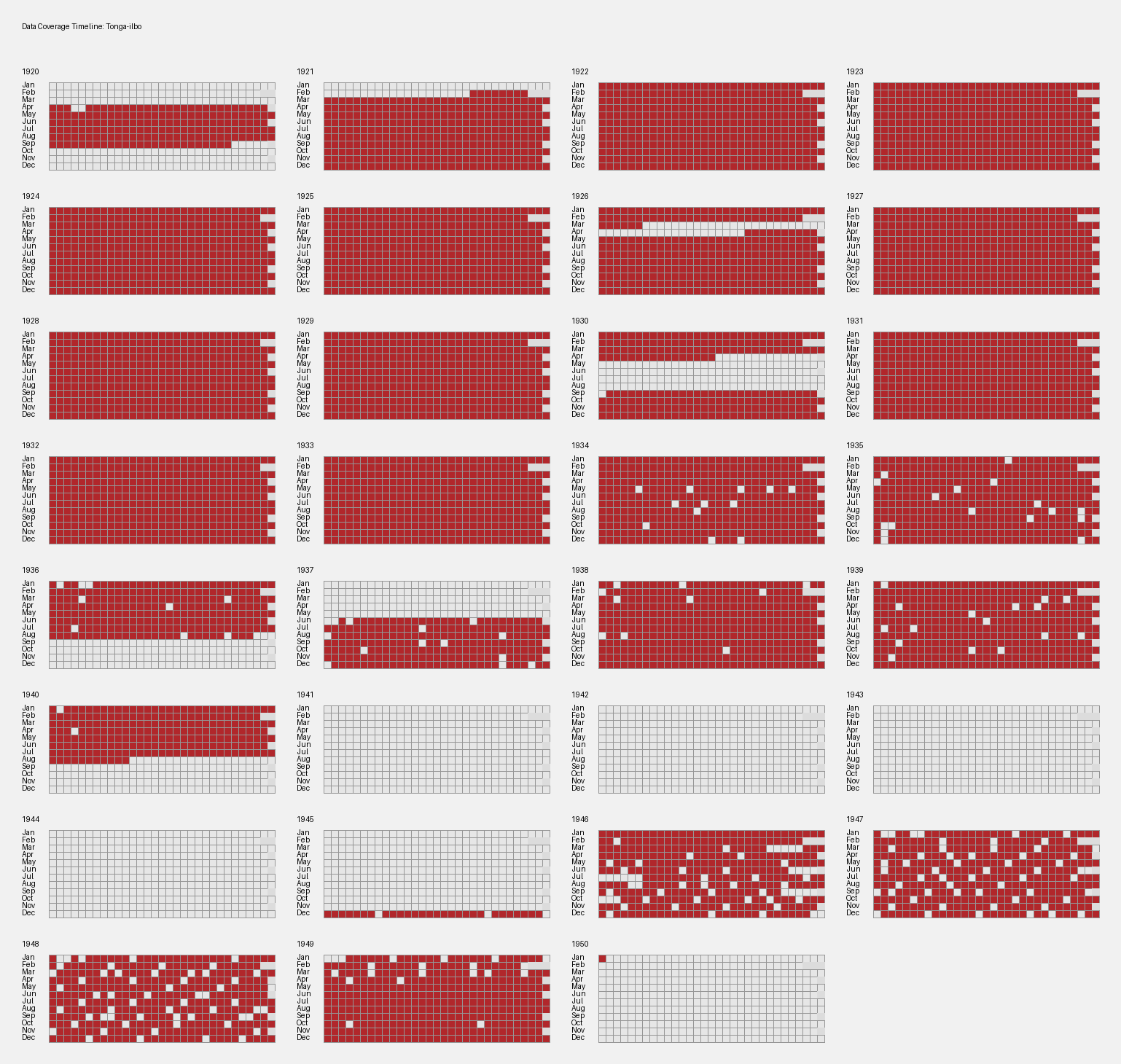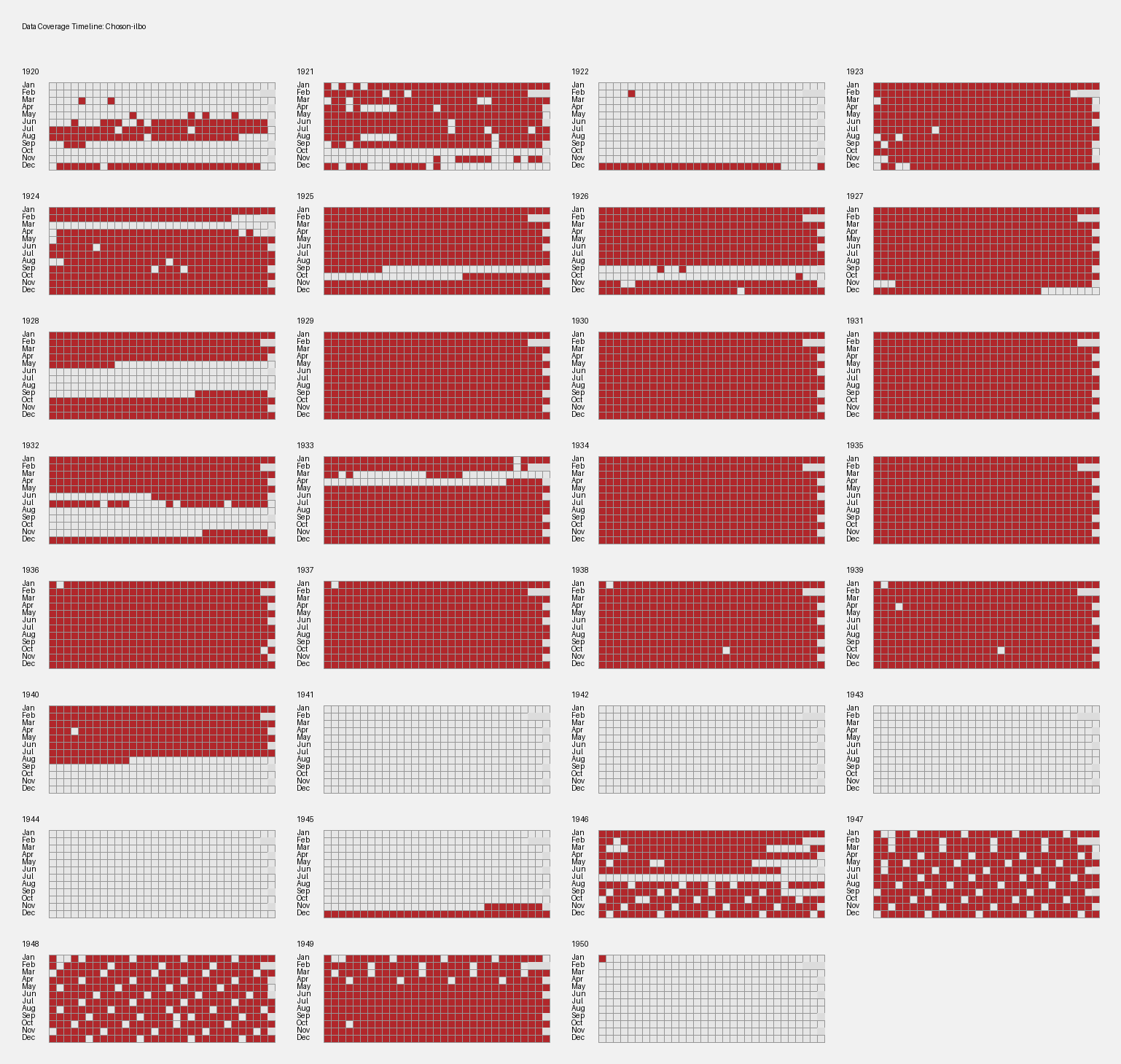Pixels of Persuasion
AKSE 2025

Morinaga Milk Caramels
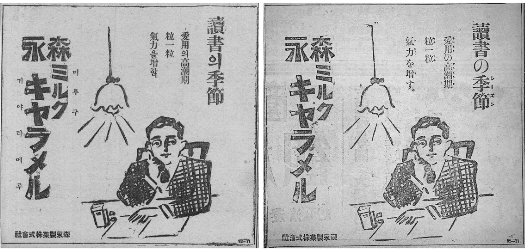
Morinaga Milk Caramels
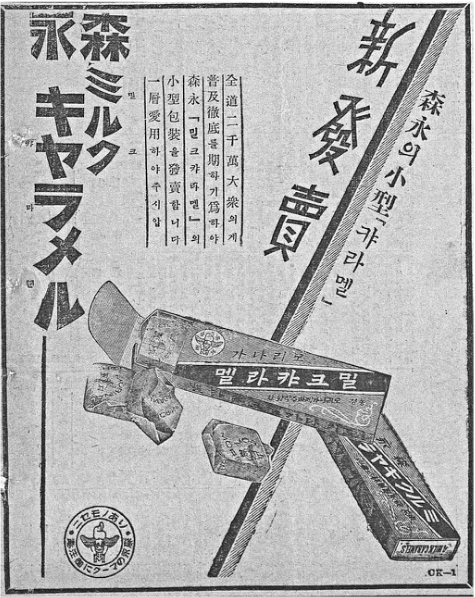
- Change in rhetoric
- For twenty million people in the country
- The seventy million compatriots
- Highlight on product rather than modern life
- Logo in Han’gŭl highlighted
- Step further in localising
Morinaga Milk Caramels
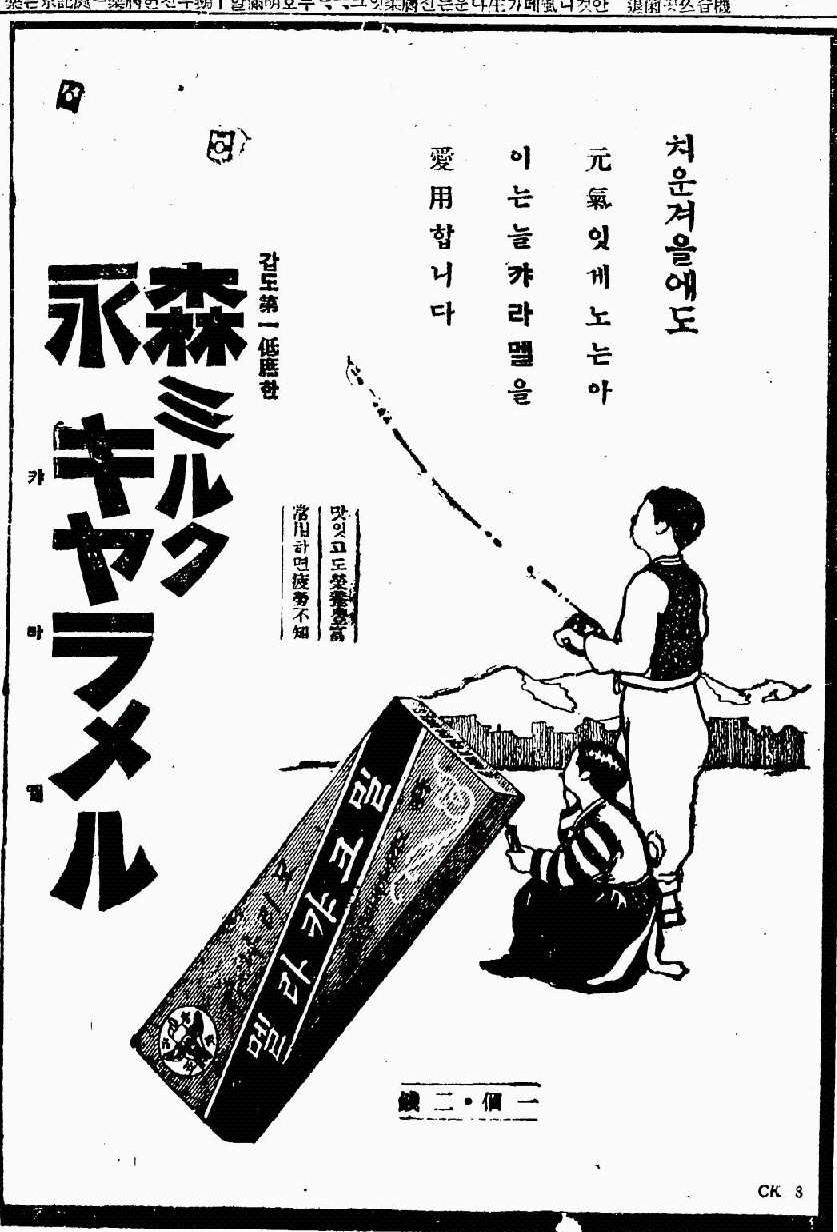
- Localisation
- Visuals more prominent
- Saektong Chŏgori Hanbok
- Kite tradition with New Year (Sŏllal)
- Despite supression of the tradition
- Can be read as..
- Imperial perceptions
- Acknowledment of Korean Cultural Identity
Why Ads?
Chronicle the marketplace itself1
Mirror and shape social norms2
- How to look, What is modern?
Stage the empire–consumer encounter3
Preserve everyday experience4
Searching for visuals?
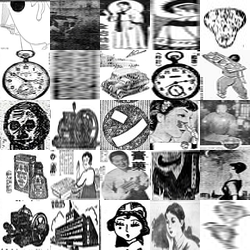
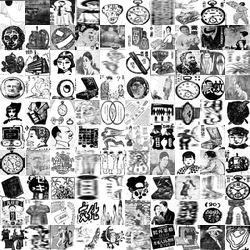


Methodology
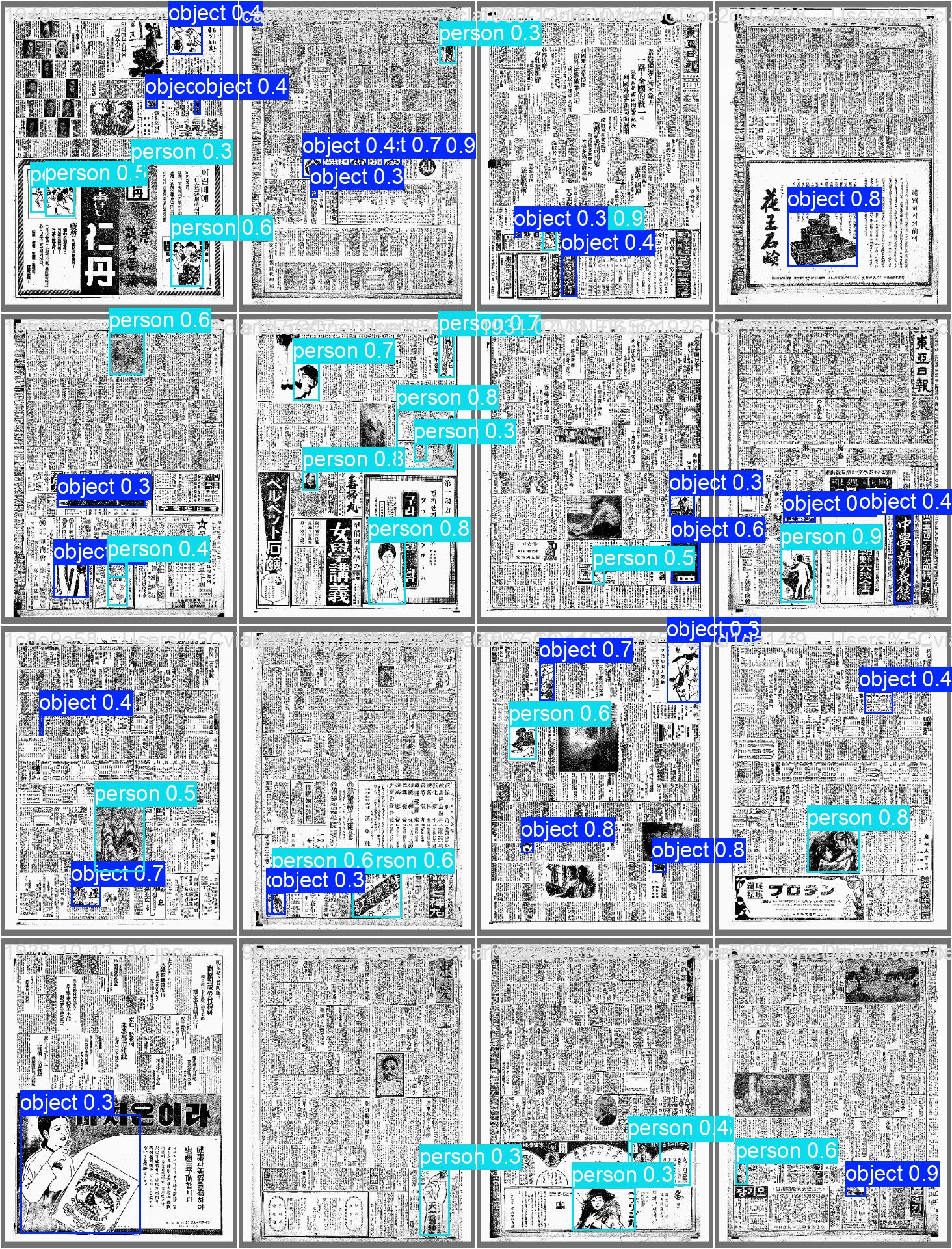
- Label 1000 newspaper pages
- Train YOLO Model to recognise advertisement illustrations1
- ‘Cut Out’ detected illustrations
- Use CLIP model to generate ‘embeddings’2
- Work with embeddings to examine and search through visuals
Embeddings Visualised
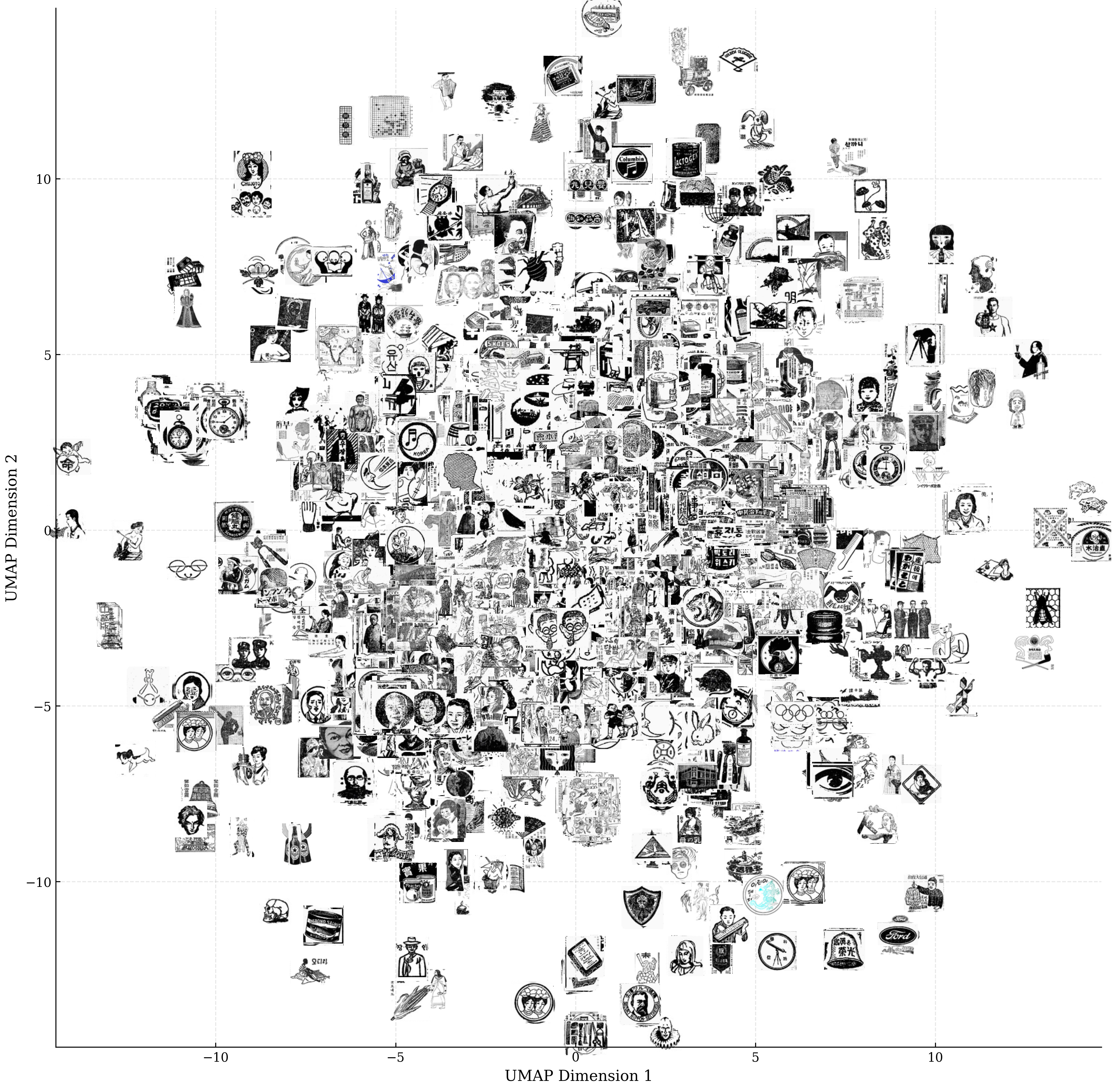
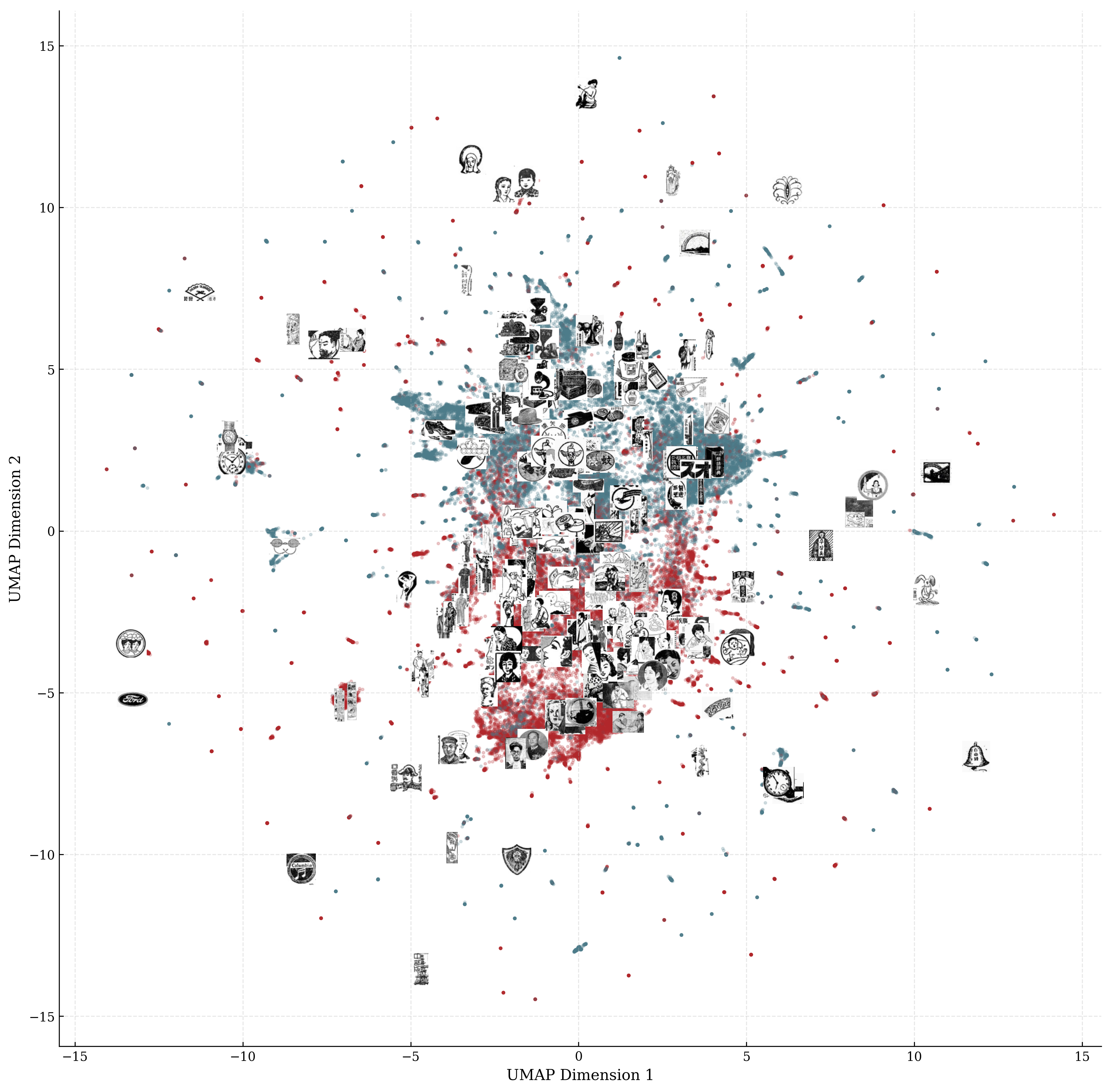
Clustering
Use Clustering Algorithm to form groups of visually similar illustrations
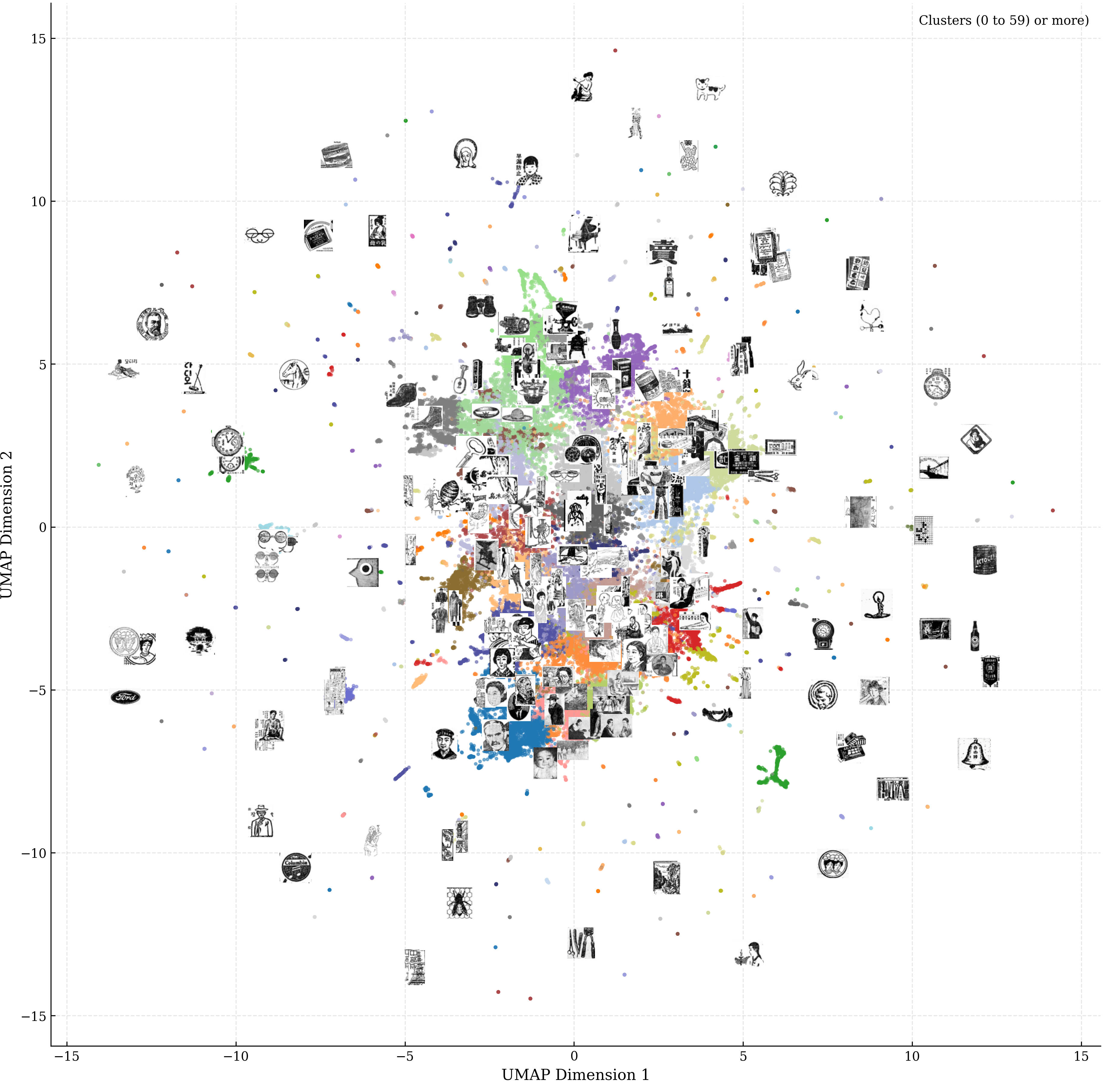
Clusters
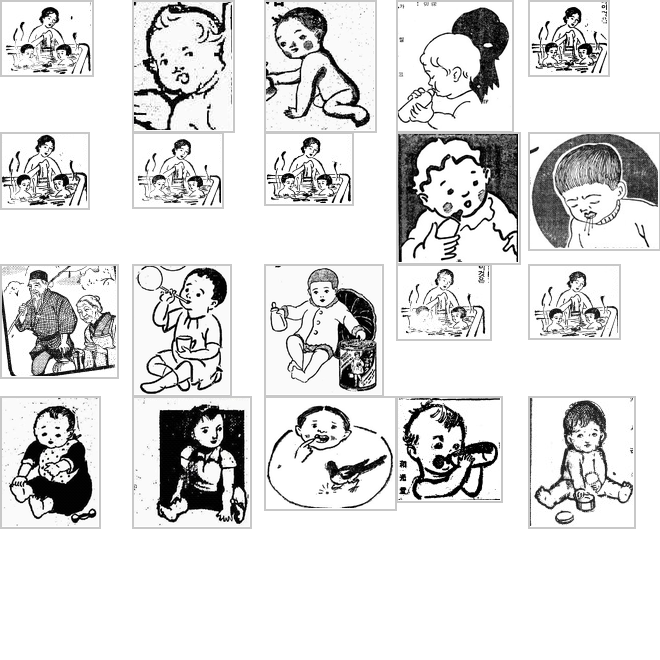
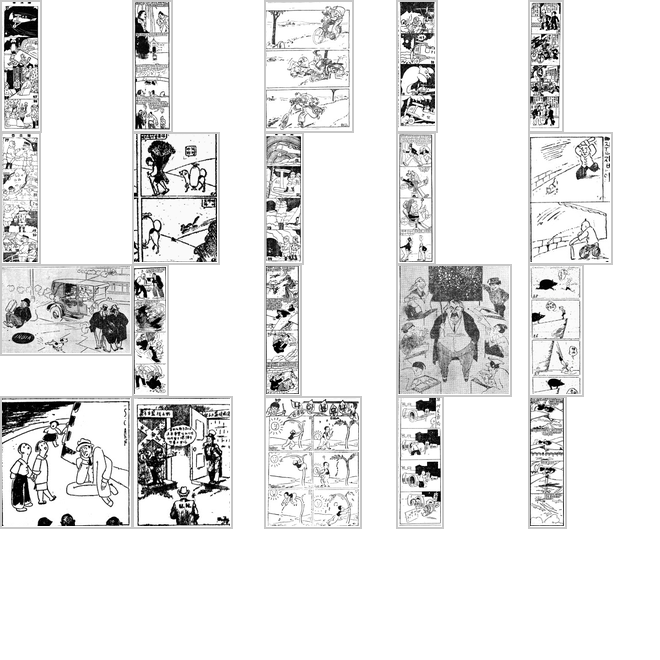
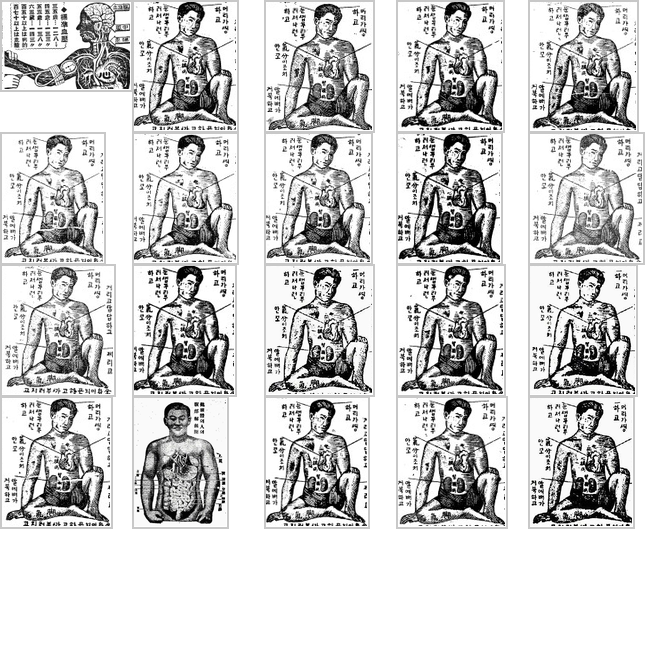
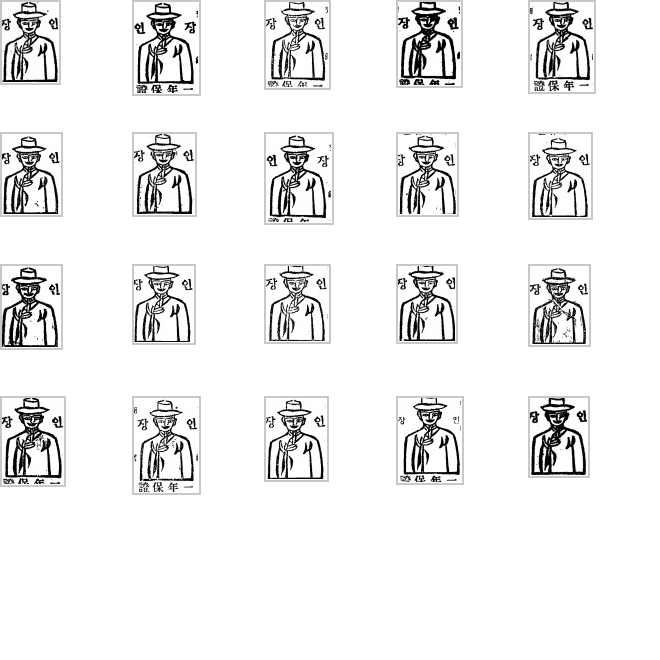
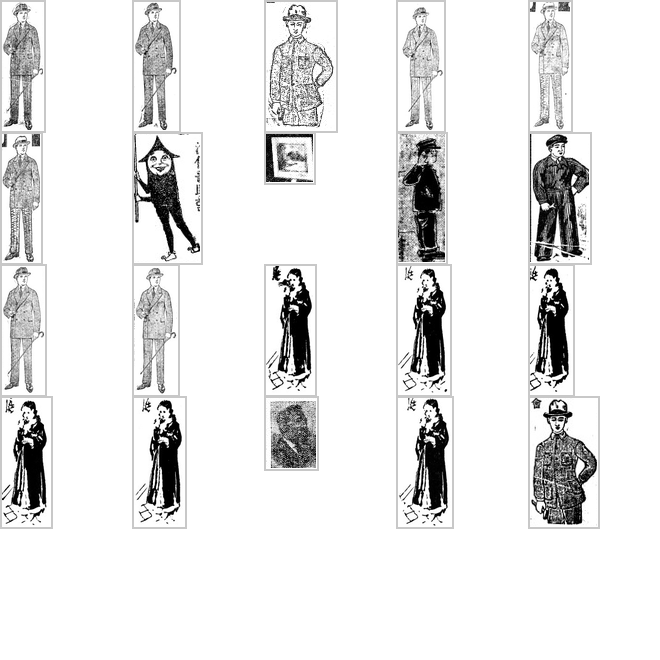
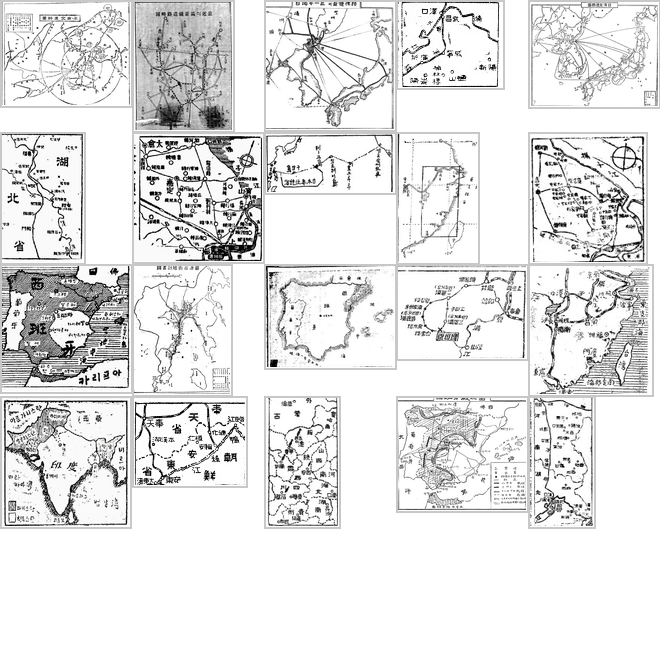
Temporal Trends

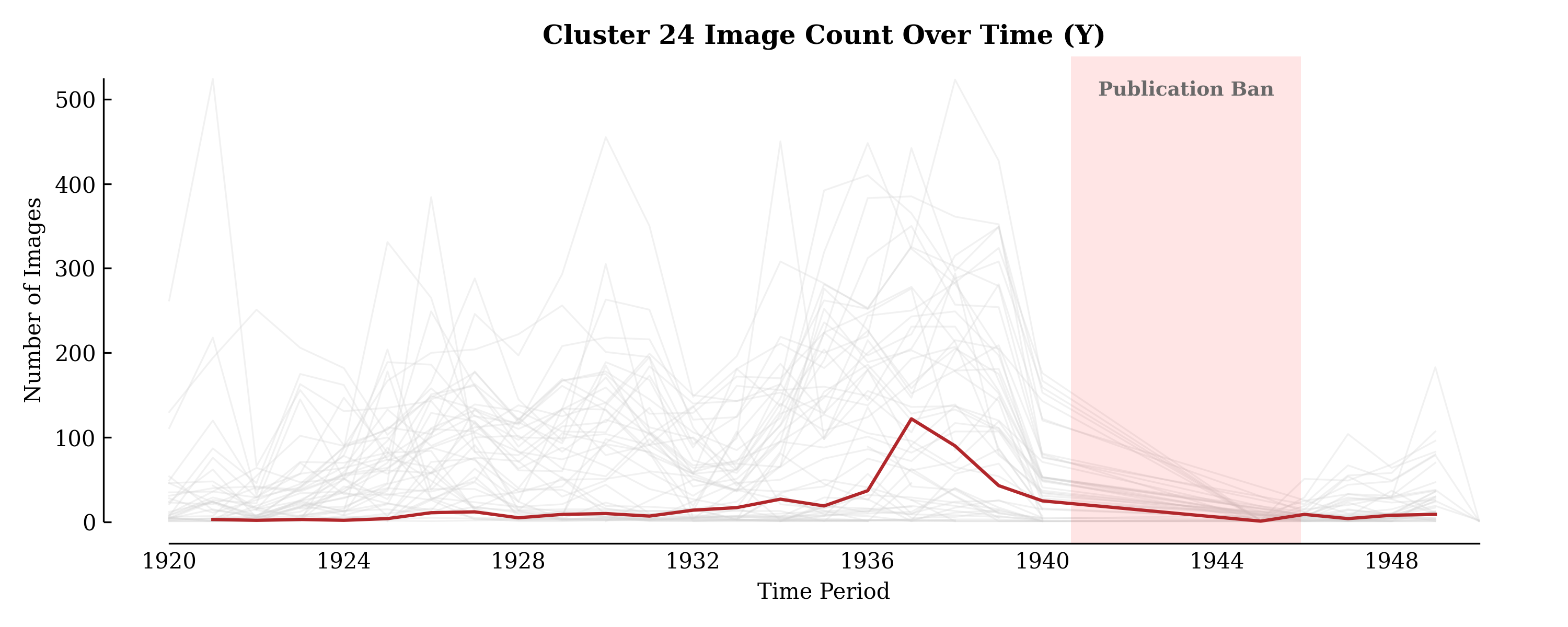
Temporal Trends
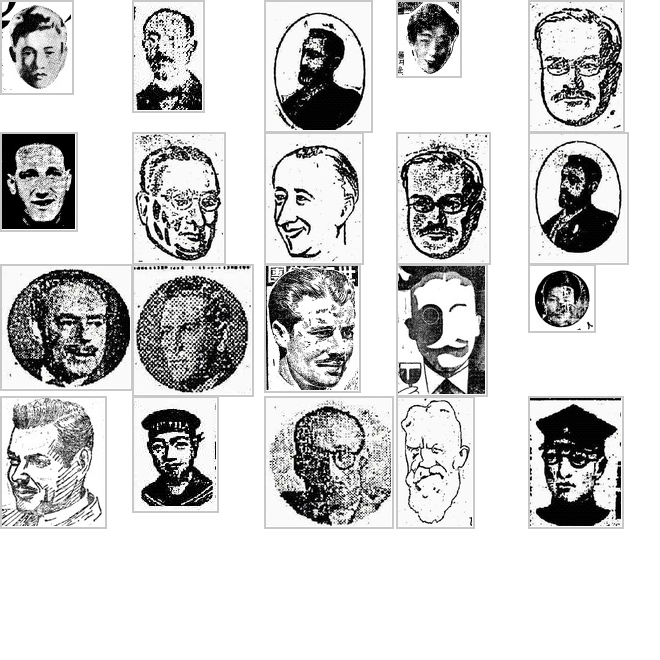
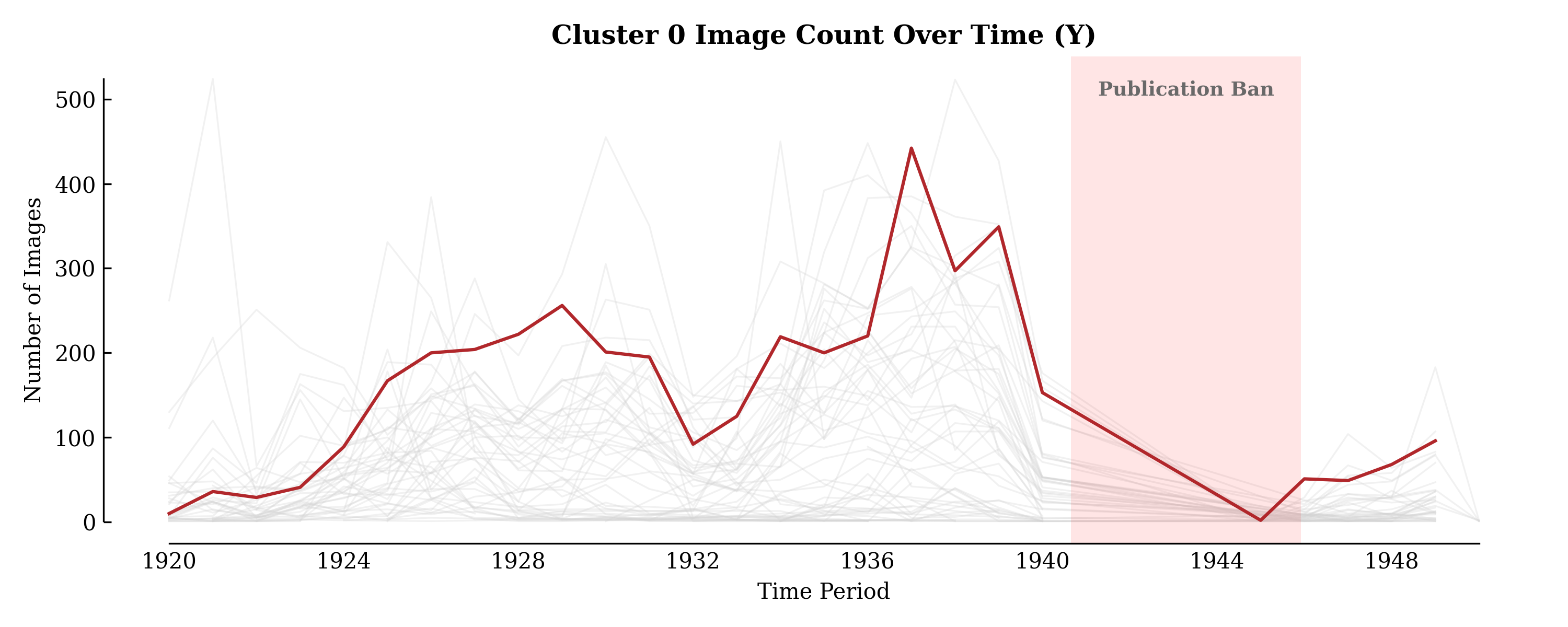
Temporal Trends

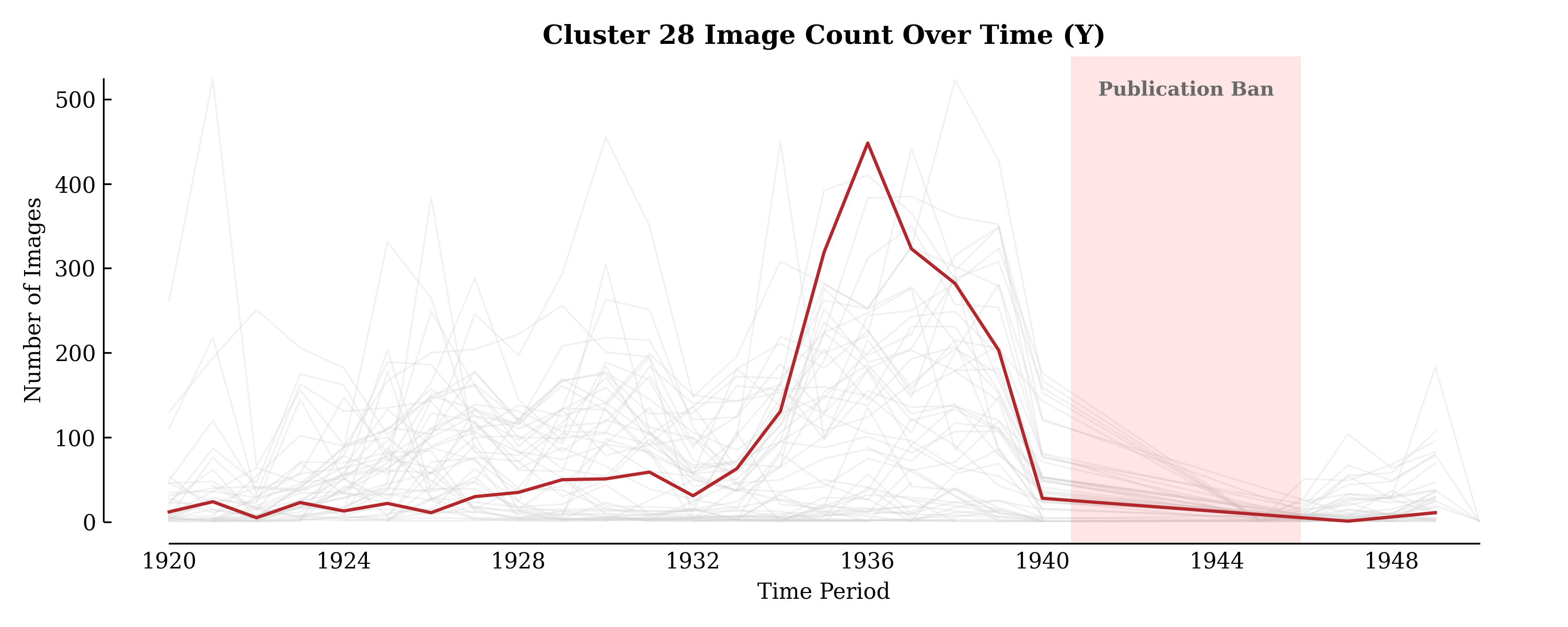
Word Driven Search
Search for keywords or concepts such as woman
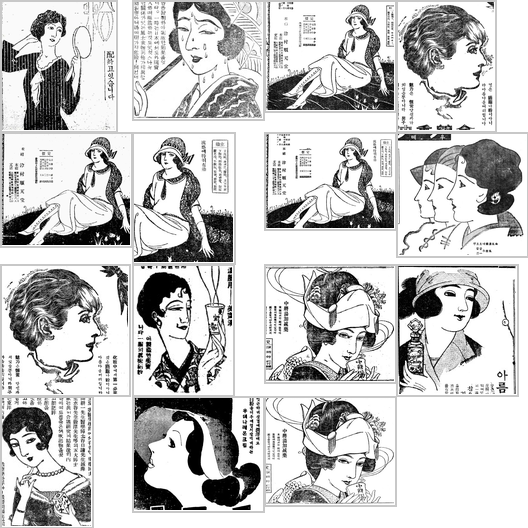
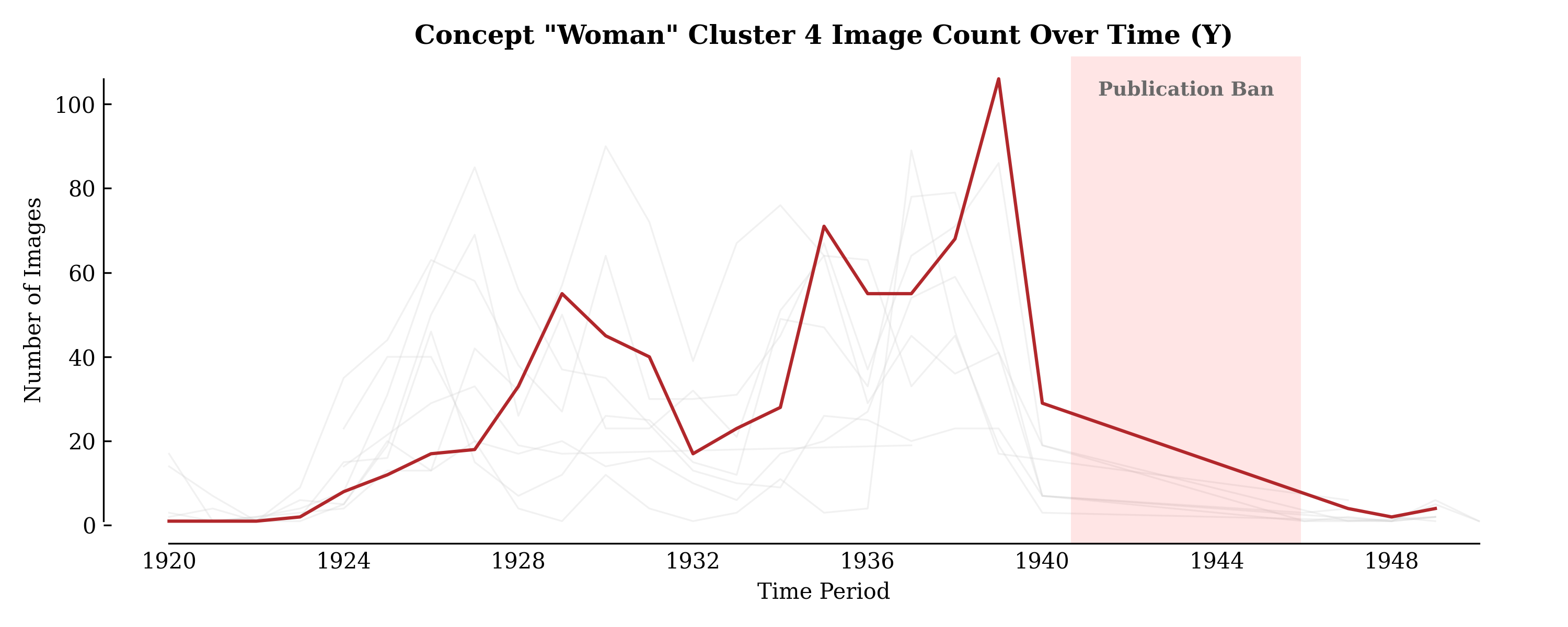
Repeating Ads
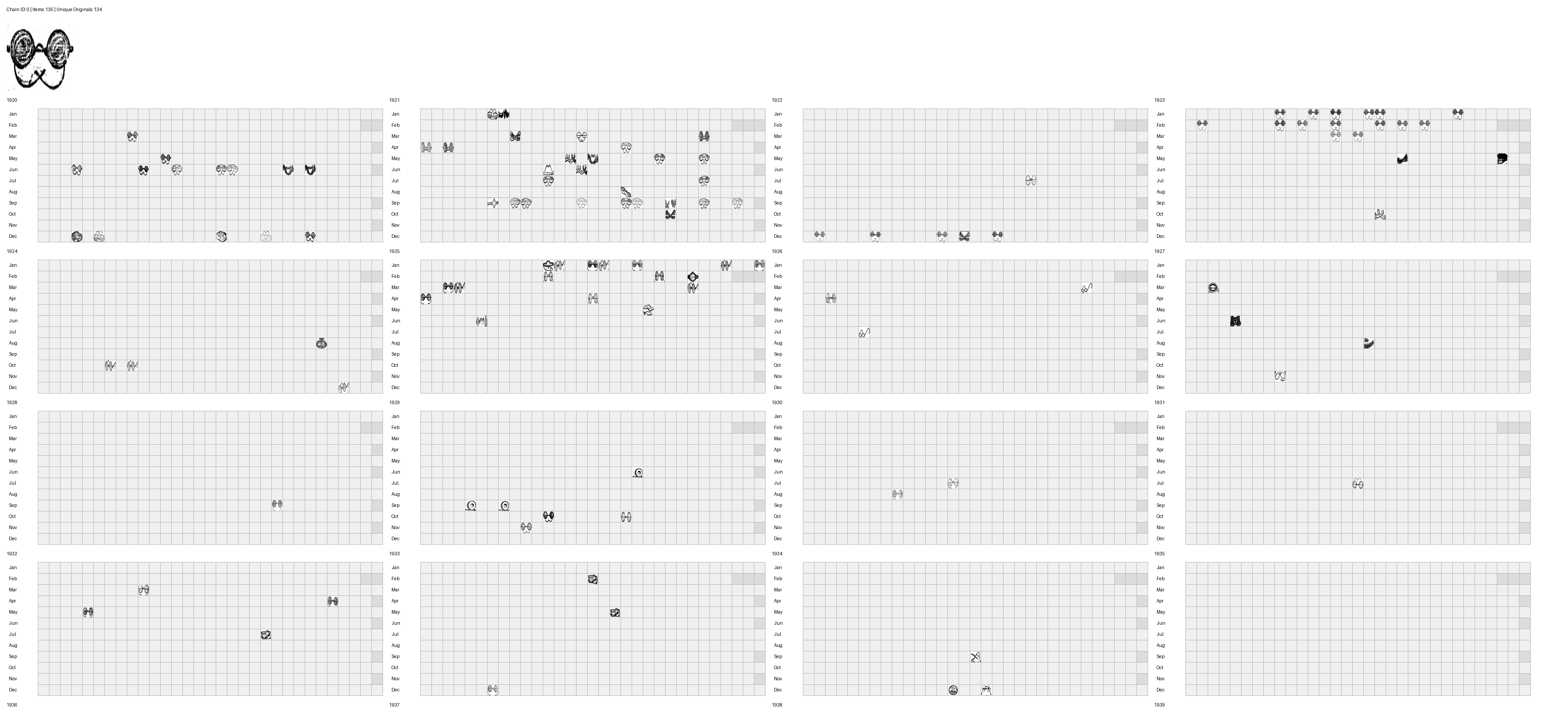
Problem
- Metadata
- What are we detecting?
Parsing with SAM
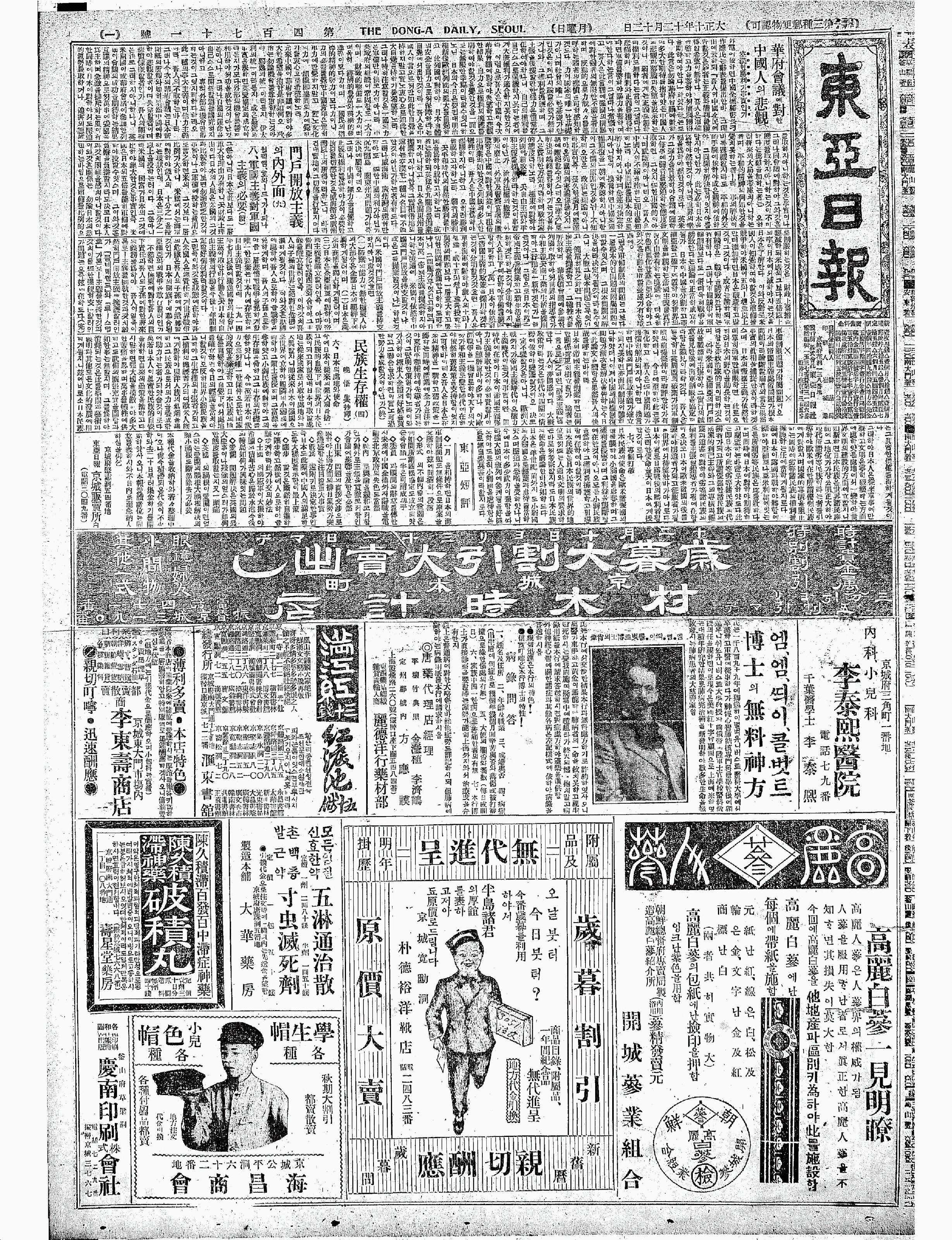
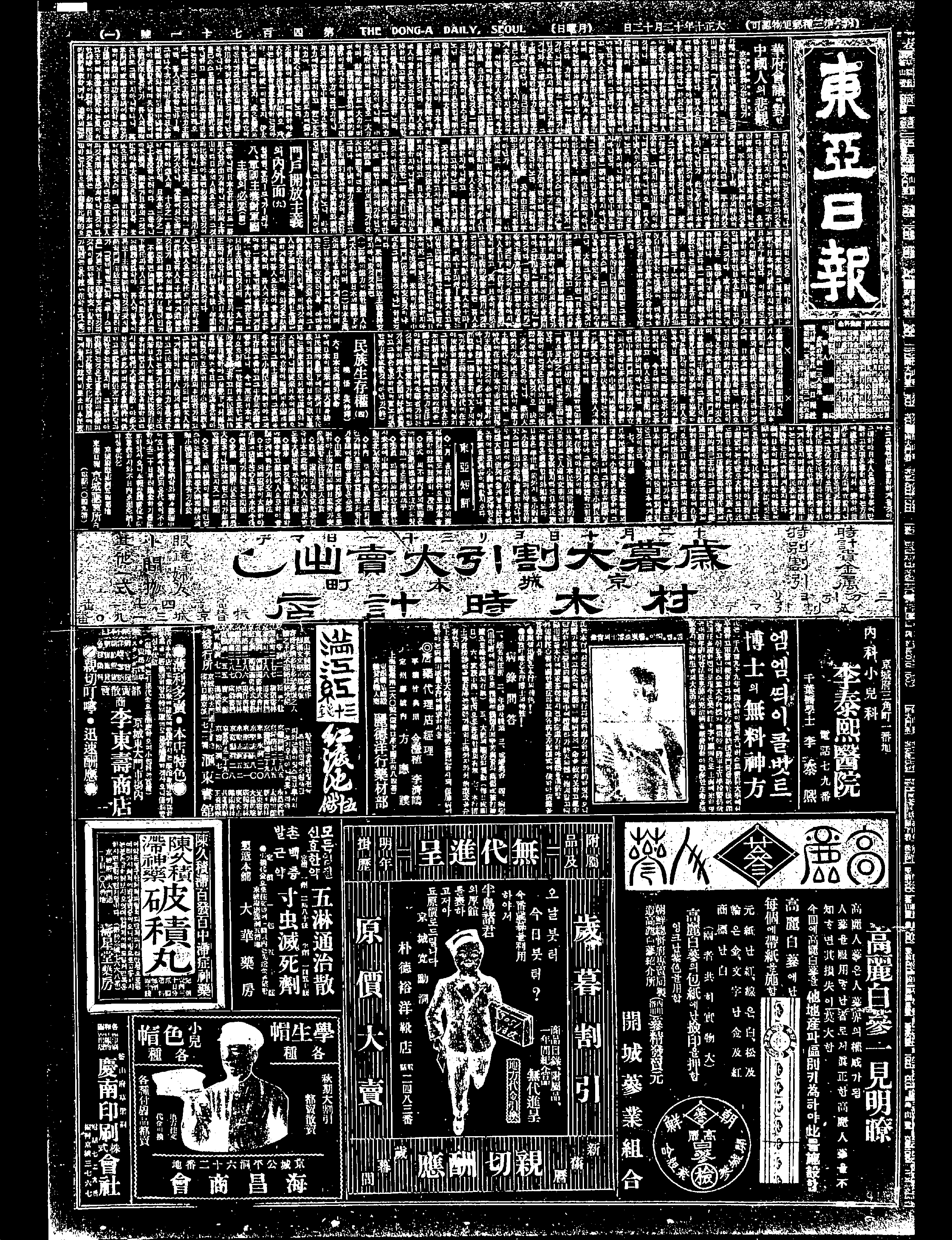
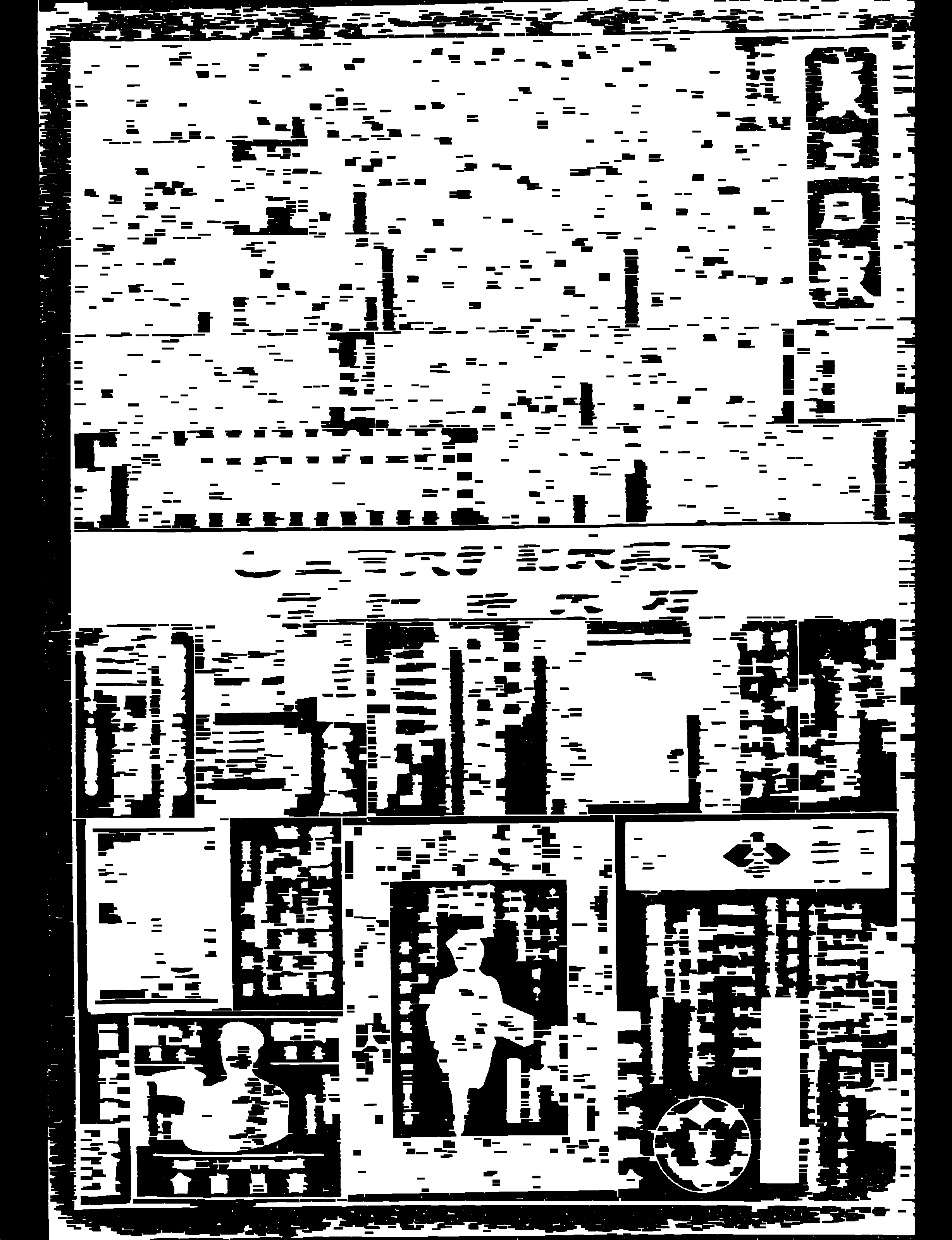
Segmentation (multimodal)
With SAM (Segment Anything)1
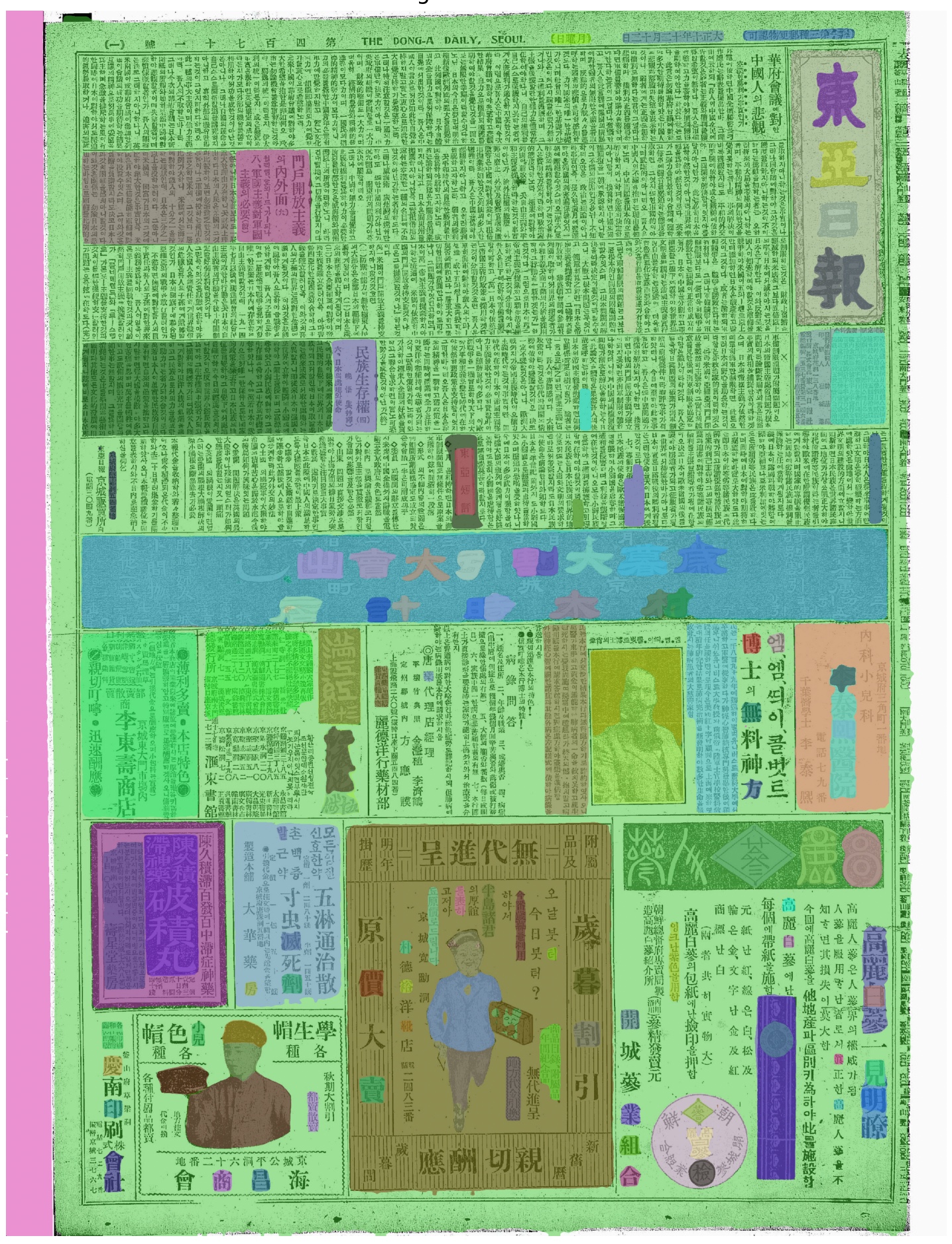
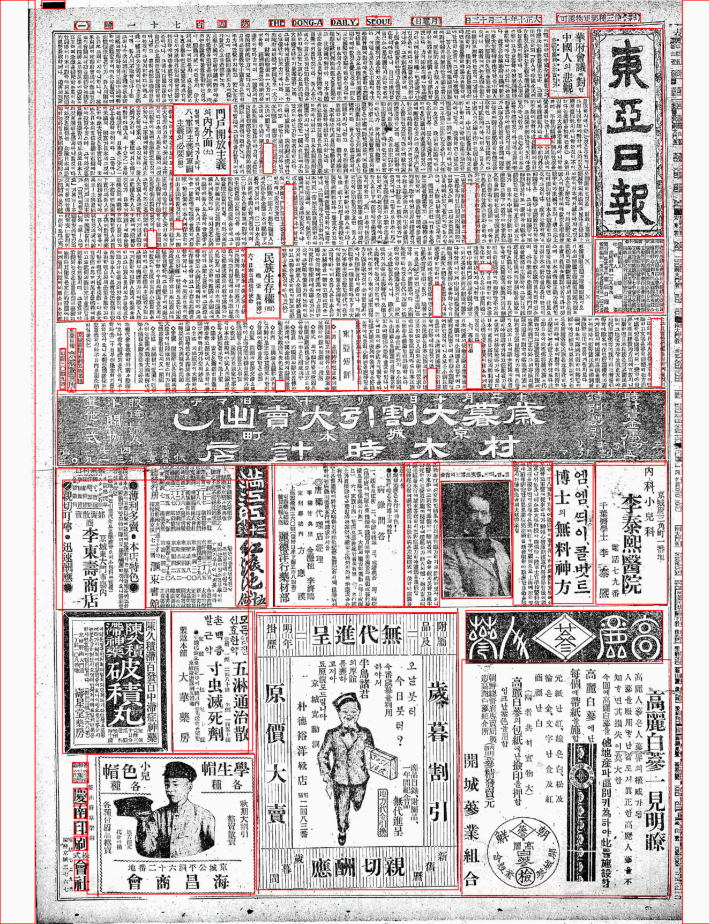
Boxes can be cutout…
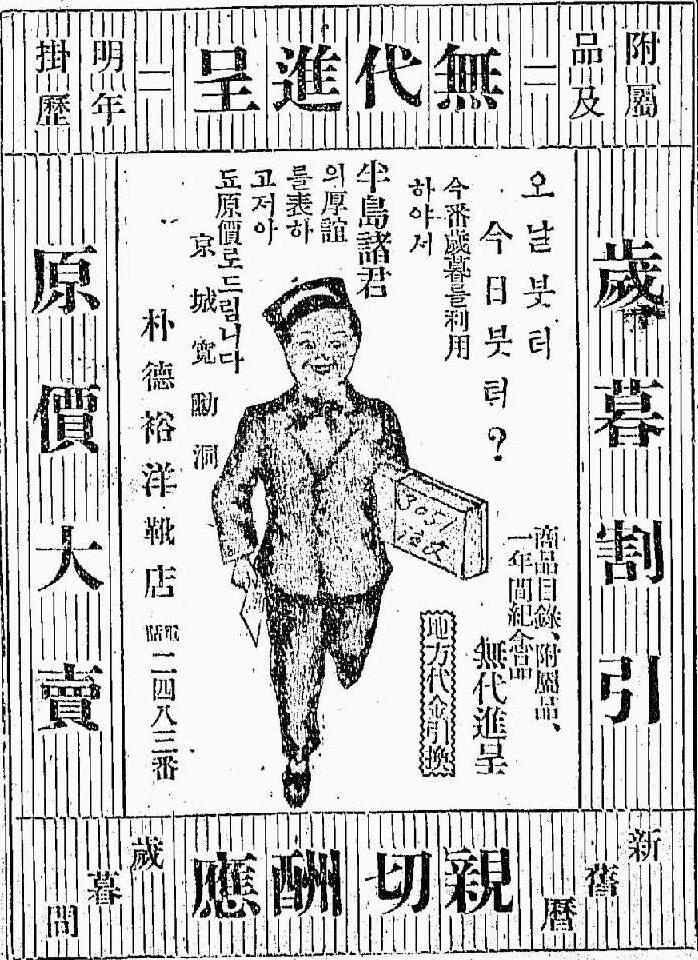
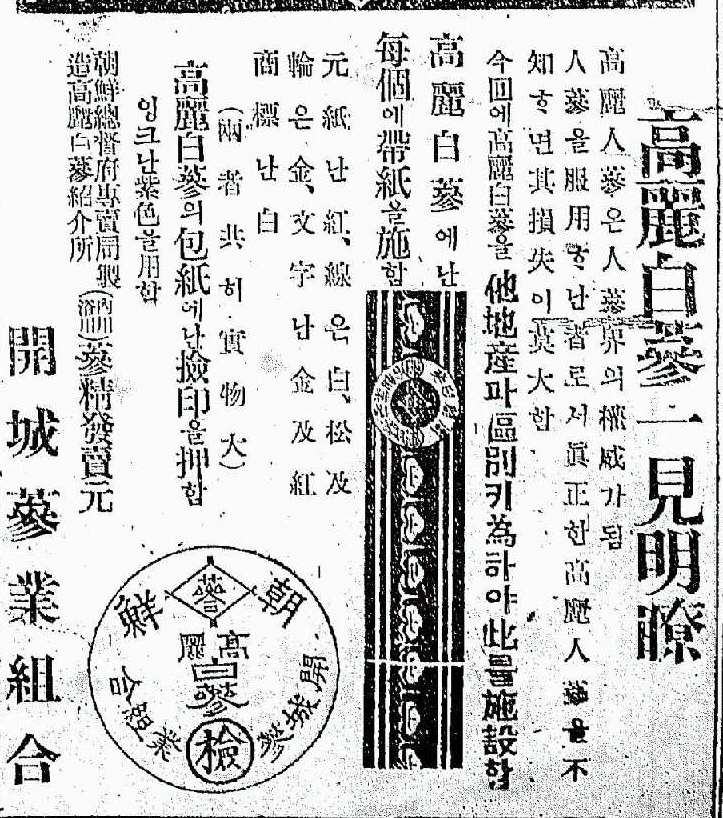
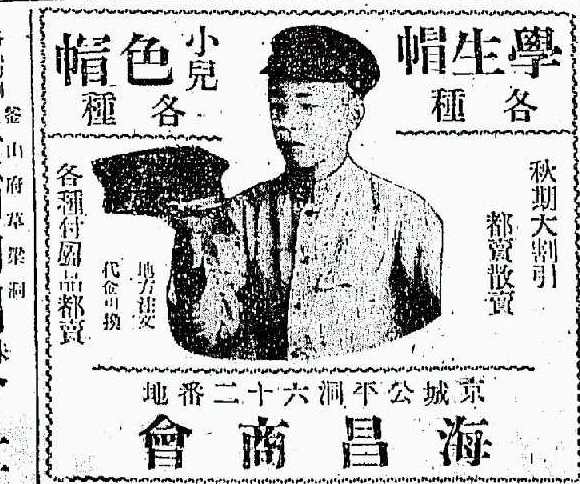
LLM (Large Language Model) transciption

{
"is_ad": true,
"company": {
"name": "朴德裕洋靴店",
"type": "Western-style shoe store"
},
"address": "京城寬助洞",
"product": "Western-style shoes and accessories",
"illustration_keywords": [
"businessman in suit",
"hat",
"briefcase",
"walking with purpose",
"early 20th-century lineart"
],
"keywords": [
"洋靴店 (western-style shoe store)",
"割引 (discount)",
"附屬品 (accessories)",
"紀念曆 (commemorative calendar)",
"新舊曆 (new and old calendars)",
"歲暮割引 (end-of-year discount)",
],
"promotional_details": {
"discount": "歲暮割引 (end-of-year discount)",
"offers": [
"product catalog and accessories",
"one-year commemorative calendar",
"new and old calendars"
]
},
"location_context": "京城 (Gyeongseong, modern-day Seoul)",
"era": "Colonial Korea (early 20th century)"
}Morinaga’s ads?



Thank you
Referenced Works
Chun, Yongkeun. “Becoming Imperial Brands: Japanese Advertising in Colonial Korea, 1920–1932.” Journal of Design History, December 2023, epad050. https://doi.org/10.1093/jdh/epad050.
———. “Displayed Modernity: Advertising and Commercial Art in Colonial Korea, 1920-1940.” Thesis, Royal College of Art, 2020.
Fedorenko, Olga. Flower of Capitalism: South Korean Advertising at a Crossroads. Hawai’i Studies on Korea. Honolulu: University of Hawai’i Press Center for Korean Studies, 2022.
Ha, Jong-Won. “Singminji siki manhwajŏk p’yohyonŭi chŭngŏnhyŏng sinmun kwanggoe nat’anan kŭndaejŏk salmui ŭimi kusŏngae kwanhan yŏn’gu 식민지 시기 만화적 표현의 증언형 신문 광고에 나타난 근대적 삶의 의미 구성에 관한 연구 [A Study on the Meaning Construction of Modern Life in Testimonial Advertising of Cartoon Style in the Colonial Period].” Ŏnlon’g kwahak yŏn’gu 22, no. 2 (2022): 48–99.
Kirillov, Alexander, Eric Mintun, Nikhila Ravi, Hanzi Mao, Chloe Rolland, Laura Gustafson, Tete Xiao, et al. “Segment Anything.” arXiv, April 2023. https://doi.org/10.48550/arXiv.2304.02643.
Marchand, Roland. Advertising the American Dream: Making Way for Modernity, 1920 - 1940. 1. paperback print., 9. [print.]. Berkeley: Univ. of California Press, 1985.
Oh, Hoon-Il. “An Analysis of Ginseng Advertisements in 1920-1930s Newspapers During Japanese Colonial Period.” Journal of Ginseng Culture 4, no. 1 (2022): 103–27. https://doi.org/10.23076/jgc.2022.4.103.
Radford, Alec, Jong Wook Kim, Chris Hallacy, Aditya Ramesh, Gabriel Goh, Sandhini Agarwal, Girish Sastry, et al. “Learning Transferable Visual Models From Natural Language Supervision.” arXiv, February 2021. https://doi.org/10.48550/arXiv.2103.00020.
Redmon, Joseph, Santosh Divvala, Ross Girshick, and Ali Farhadi. “You Only Look Once: Unified, Real-Time Object Detection.” In 2016 IEEE Conference on Computer Vision and Pattern Recognition (CVPR), 779–88. Las Vegas, NV, USA: IEEE, 2016. https://doi.org/10.1109/CVPR.2016.91.
Sŏ, Yuri. Sidae ŭi ŏlgul: Chapchi p’yoji ro ponŭn kŭndae 시대의 얼굴: 잡지 표지로 보는 근대 [The faces of magazines in modern Korea: Iconography, history and politics]. Seoul: Somyŏng Ch’ulp’an, 2016.
Yoo, Sun-young. “Embodiment of American Modernity in Colonial Korea.” Inter-Asia Cultural Studies 2, no. 3 (January 2001): 423–41. https://doi.org/10.1080/14649370120010939.




Supplimental Slides
Data
Gathered scans of Tong-a Ilbo (81,084) and Chosŏn Ilbo (77,192)
